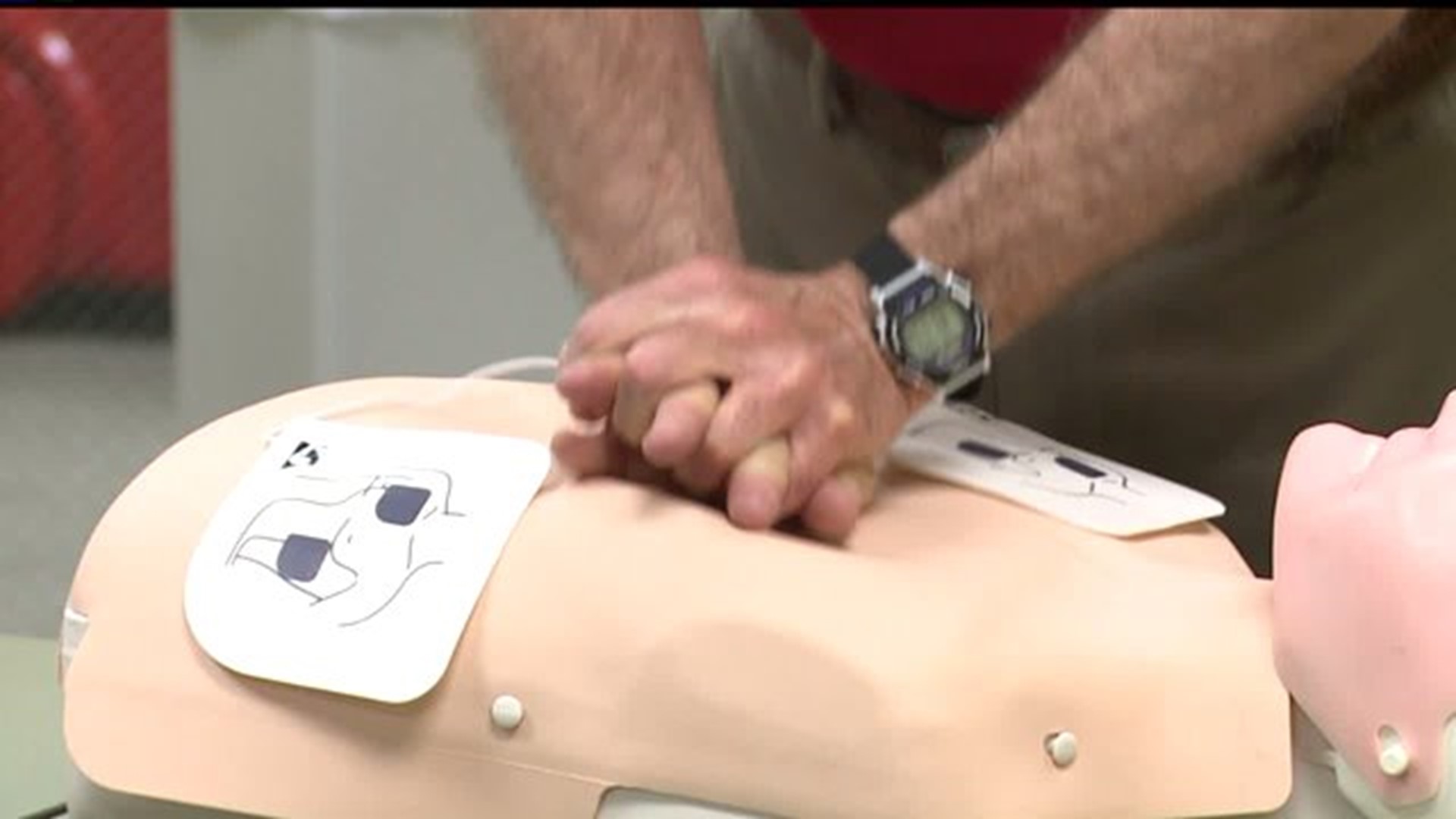CUMBERLAND COUNTY, Pa. — In light of Damar Hamlin's recent injury, FOX43 spoke to healthcare professionals about how to properly care for a patient experiencing cardiac arrest.
“When we see someone sudden collapsed or come across someone who is unresponsive, we want to shake them, ask if they’re okay and check for signs of life,” said Bill Odoms, board member at The Peyton Walker Foundation.
When there’s no sign of life, Odoms says to remove the shirt from the patient and center your hands in the middle of the chest where the sternum is. One hand will lay flat on the patient's chest, and the other will be on top and interlocked with the bottom hand.
“You want to square your shoulders over your hands and push hard and fast,” said Odoms. “We’re trying to push the rate of 100 to 120 beats a minute.”
While performing chest compressions, designate someone to call 911 and another person to retrieve an automated external defibrillator (AED). The AED will come with two pads: one that will go over the right breast and one that will go under the left breast.
Chest compressions will continue while the AED pads are being applied. Cease chest compressions immediately after the second AED pad is applied.
“The AED is going to decide whether or not it should deliver a shock to that person,” said Odoms.
He said the most critical part of this process is to not touch the AED as it is delivering a shock to the body.
Odoms said the AED only administers a shock when it detects no heartbeat or consciousness. If the person doesn’t come back to life, chest compressions should resume until emergency services arrive.
“Every minute that goes by that we don’t do this, this person loses a 10% chance of coming back to life,” said Odoms.

